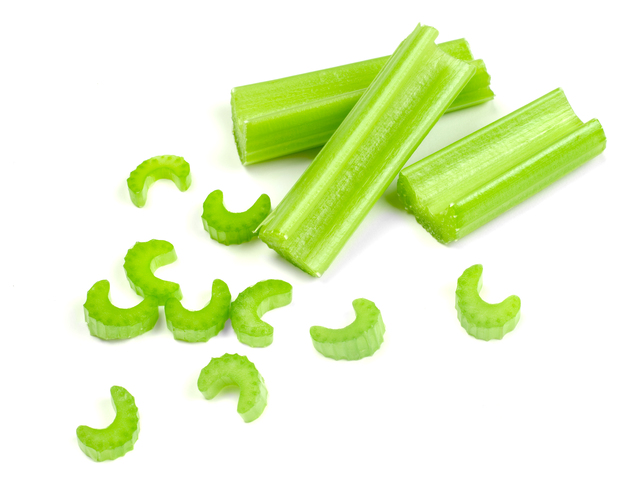Can Dogs Eat Celery: Doggie Diet Examined
As a pet owner, it’s natural to wonder about the safety and suitability of various foods for our furry companions. One such question that often arises is “Can dogs eat celery?”.
In this article, we will explore the topic in detail and provide valuable insights into the nutritional value, health benefits, risks, and precautions associated with feeding celery to dogs. So, let’s dive in and find out if celery is a safe and healthy snack for our canine friends.
Nutritional Value of Celery
Celery is a crunchy and refreshing vegetable that is not only low in calories but also rich in essential nutrients. Before we delve into its suitability for dogs, let’s take a closer look at the nutritional composition of celery.
Health Benefits of Celery for Dogs
Celery offers several health benefits for dogs, making it a potential addition to their diet. Let’s explore some of these benefits in detail.
Hydration: Celery has high water content, which can help keep your dog hydrated. Proper hydration is essential for maintaining overall health and supporting vital bodily functions.
Digestive Health: Celery contains dietary fiber, which aids in maintaining a healthy digestive system in dogs. Fiber promotes regular bowel movements, helps prevent constipation, and supports optimal gut health.
Weight Management: With its low-calorie nature, celery can be a beneficial snack for dogs watching their weight or prone to obesity. It offers a satisfying crunch without adding excessive calories to their diet.
Nutritional Value: Celery is rich in vitamins and minerals, including vitamin K, vitamin A, potassium, and folate. These nutrients contribute to various aspects of your dog’s health, such as bone strength, immune function, and overall well-being.
Fresh Breath: Chewing on celery can help naturally clean your dog’s teeth and freshen their breath. The fibrous texture of celery can act as a natural toothbrush, removing plaque and tartar buildup.
Antioxidant Properties: Celery contains antioxidants, such as flavonoids and vitamin C, which help combat free radicals and oxidative stress in the body. These antioxidants contribute to a healthy immune system and may have anti-inflammatory effects.
Joint Health: Celery contains compounds like luteolin, which possess anti-inflammatory properties. These properties may help reduce inflammation in joints, potentially benefiting dogs with arthritis or other joint conditions.
It’s important to note that while celery offers health benefits, it should not replace a balanced and complete diet formulated for dogs. Celery should be offered as a snack or occasional addition to their regular meals.
As with any new food, introduce celery gradually to ensure your dog tolerates it well. Monitor their response and consult with your veterinarian for personalized advice regarding your dog’s specific dietary needs and health conditions.
Risks and Precautions
While celery can offer health benefits, it’s essential to be aware of potential risks and take necessary precautions when feeding it to your dog.
Choking Hazard
Celery, especially its fibrous strings, can present a choking hazard for dogs, particularly those who tend to gulp down their food quickly. It’s crucial to slice or chop celery into small, manageable pieces to minimize this risk.
Allergies and Digestive Issues
Just like humans, dogs can have food allergies or sensitivities. While celery is not a common allergen, some dogs may still experience adverse reactions. Introduce celery gradually and observe your dog for any signs of digestive issues or allergic reactions.
Preparing Celery for Dogs
When preparing celery for your dog, there are a few essential steps to follow to ensure its safety and palatability.
1) Choose Fresh Celery:
Select fresh, crisp celery stalks from a reputable source. Organic celery is preferable to minimize exposure to pesticides and chemicals.
2) Wash Thoroughly:
Before serving celery to your dog, wash it thoroughly under cool running water to remove any dirt, debris, or potential contaminants. This step helps ensure the celery is clean and safe for consumption.
3) Remove Leaves:
Trim off the leaves from the celery stalks. While celery leaves are not toxic to dogs, they can be tough to chew and may cause choking hazards or digestive discomfort. Discard the leaves or save them for other culinary uses.
4) Slice into Bite-Sized Pieces:
Cut the celery stalks into small, bite-sized pieces appropriate for your dog’s size. For smaller dogs, smaller pieces are ideal to prevent choking. Larger dogs may be able to handle slightly larger pieces, but it’s always important to consider your dog’s chewing abilities.
5) Supervise Chewing:
When offering celery to your dog, ensure they chew it thoroughly before swallowing. This helps prevent choking and aids in digestion. It’s recommended to supervise your dog while they enjoy celery to ensure they are eating it safely.
6) Incorporate with Meals or Treats:
You can add the prepared celery pieces to your dog’s regular meals as a crunchy and nutritious addition. Alternatively, use celery as a healthy snack or training treat. Just remember to account for the extra calories and adjust their overall diet accordingly.
7) Storage:
If you have leftover celery, store it in an airtight container in the refrigerator to maintain its freshness. However, keep in mind that celery can wilt and lose its crunchiness over time. It’s best to use it within a few days for optimal quality.
It’s important to note that while celery is generally safe for dogs, individual dogs may have different reactions or sensitivities. Introduce celery gradually into your dog’s diet and observe their response. If you notice any digestive upset or adverse reactions, it’s best to avoid feeding celery to your dog and consult with your veterinarian.
Introducing Celery to Your Dog
When introducing celery to your dog’s diet, it’s important to proceed with caution and monitor their response. Follow these guidelines for a smooth transition:
Start with Small Quantities
Begin by offering small quantities of celery to gauge your dog’s reaction. Observe if they enjoy the taste and experience no adverse effects.
Observe for Any Negative Reactions
Keep a close eye on your dog after introducing celery. Watch for any signs of digestive discomfort, such as vomiting, diarrhea, or changes in behavior. If any negative reactions occur, consult your veterinarian.
Can Dogs Eat Celery Conclusion
In conclusion, to answer the question: “Can dogs eat celery?”, celery can be a safe and healthy addition to your dog’s diet, offering nutritional benefits and a satisfying crunch. However, it’s crucial to take appropriate precautions, including proper preparation and monitoring for any adverse reactions. As always, consult with your veterinarian before making any significant changes to your dog’s diet.
Can Dogs Eat Celery FAQs
1. Can all dogs eat celery?
While celery is generally safe for dogs to consume, not all dogs may tolerate it well. Some dogs may have digestive sensitivities or allergies to celery. It’s important to introduce celery gradually and monitor your dog for any adverse reactions. If you notice any signs of discomfort or digestive issues, it’s best to avoid feeding celery to your dog and consult with your veterinarian.
2. How much celery can I feed my dog?
The amount of celery you can feed your dog depends on their size, weight, and overall diet. As a general guideline, it’s recommended to offer celery in small quantities as a treat or addition to their regular meals. Start with a small piece and observe how your dog responds.
If they enjoy it and experience no adverse effects, you can gradually increase the amount. However, remember that celery should not make up a significant portion of their diet, as dogs require a balanced and varied diet to meet their nutritional needs.
Remember, while celery can be a nutritious snack for dogs, every dog is unique, and individual dietary needs may vary. Always prioritize your dog’s well-being and consult with your veterinarian for personalized advice.
3. Are there any alternatives to celery for dogs?
Yes, there are several alternatives to celery that you can offer to your dog as healthy snacks or additions to their meals. Some dog-friendly alternatives include carrots, cucumbers, green beans, and apples (without seeds or core). These alternatives provide similar crunchy textures and can offer nutritional benefits to your dog. However, always ensure that any alternative treats or foods are safe and suitable for your specific dog’s dietary requirements.
4. Can celery be used as a training treat for dogs?
Celery can be used as a training treat for dogs, especially if they enjoy the taste and texture. However, keep in mind that not all dogs find celery enticing as a reward during training. Some dogs may prefer higher-value treats such as small pieces of cooked chicken, cheese, or commercial dog treats specifically formulated for training purposes. It’s important to use treats that motivate and engage your dog during training sessions to maximize their effectiveness.
5. Are there any specific breeds that should avoid celery?
There are no specific dog breeds that should avoid celery altogether. However, as mentioned earlier, individual dogs may have sensitivities or allergies to celery. If you have a dog with known food allergies or a breed that is prone to allergies, it’s advisable to be cautious when introducing celery or any new food. Always consult with your veterinarian to ensure the safety and suitability of specific foods for your dog, taking into consideration their breed, health condition, and dietary needs.




